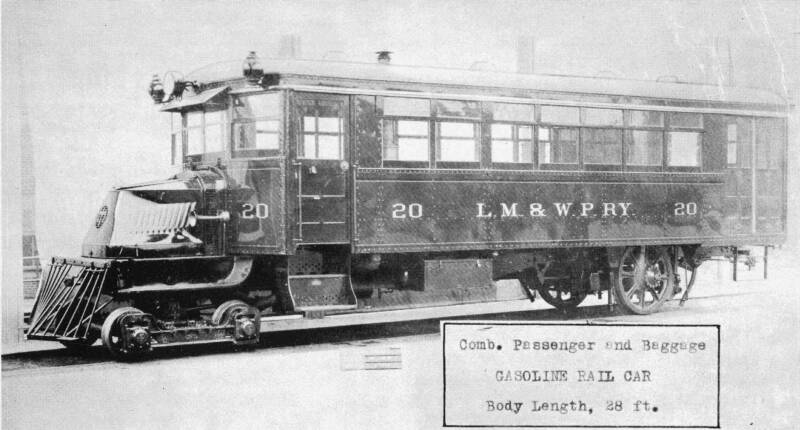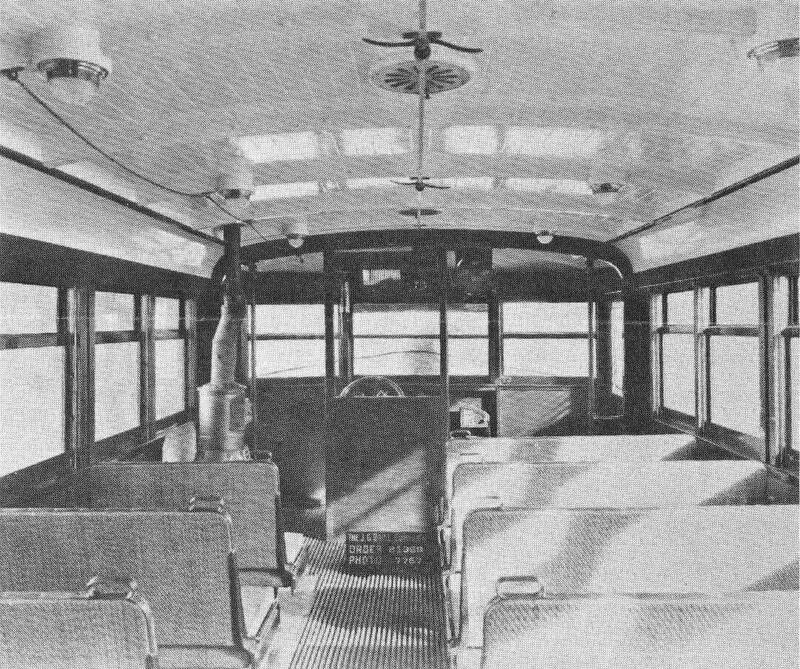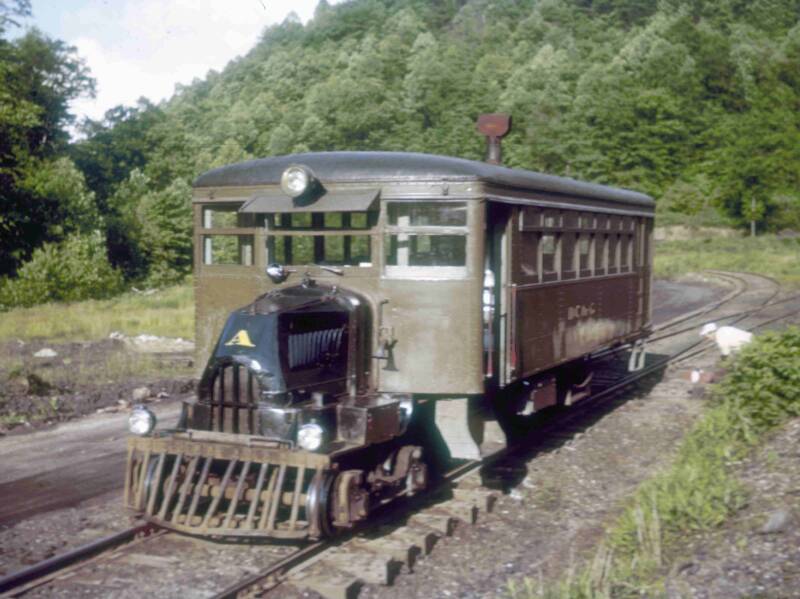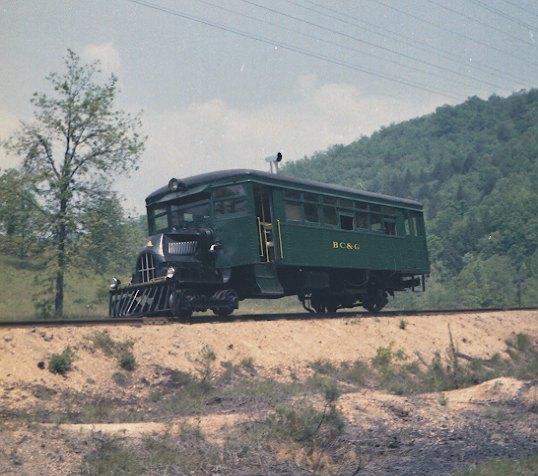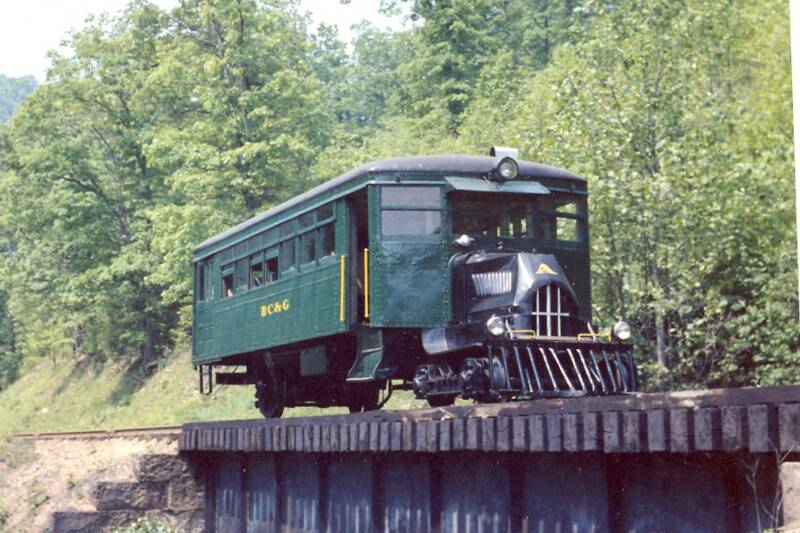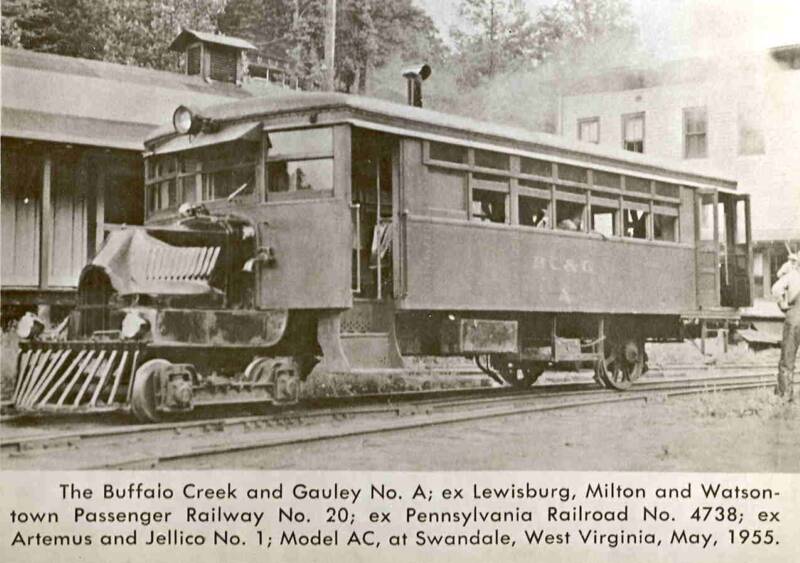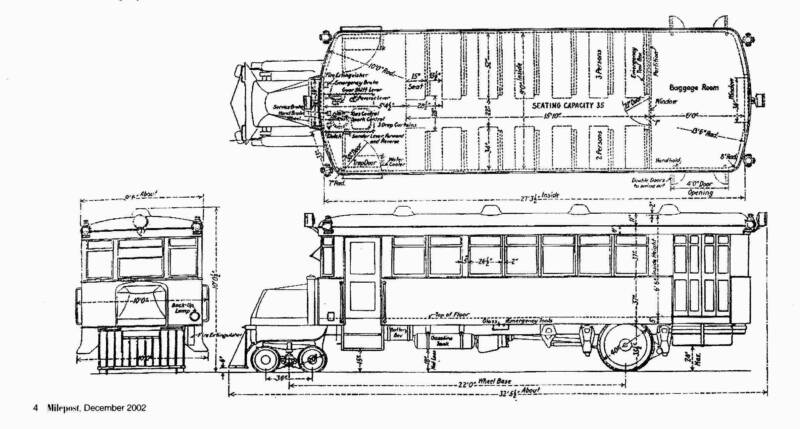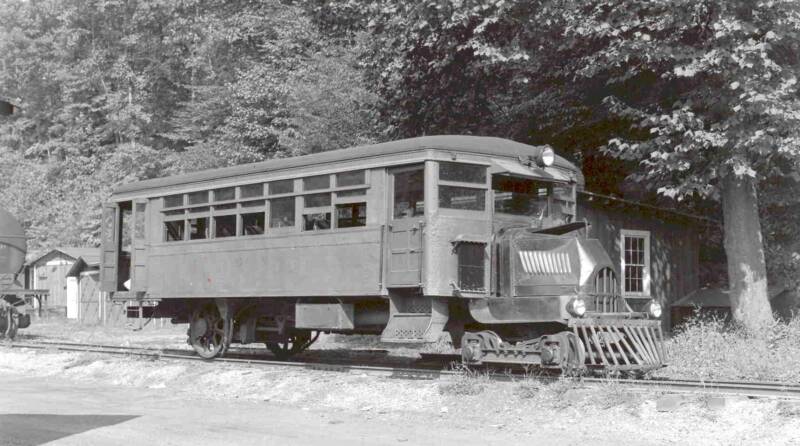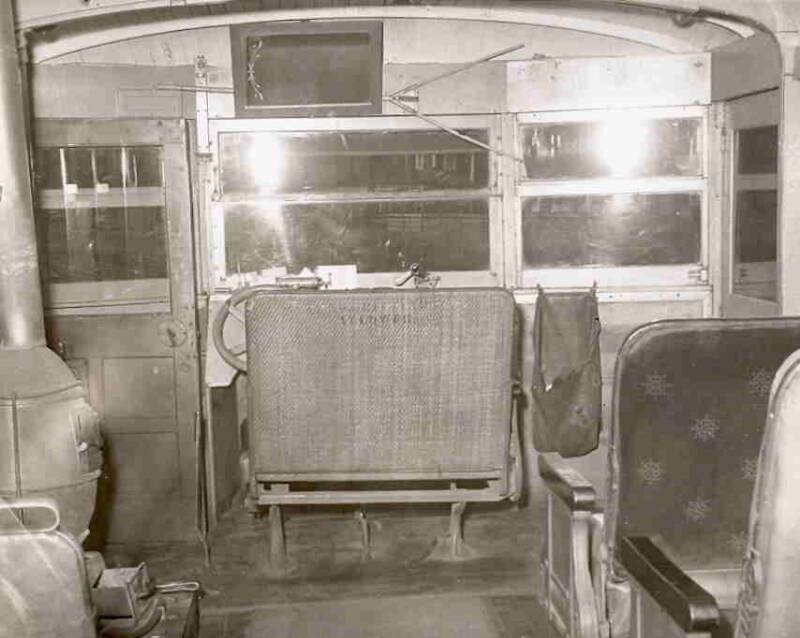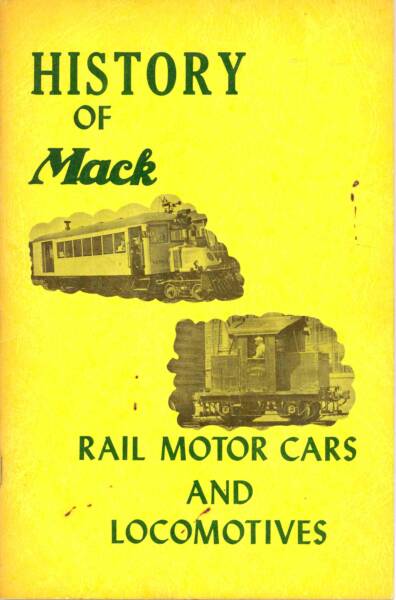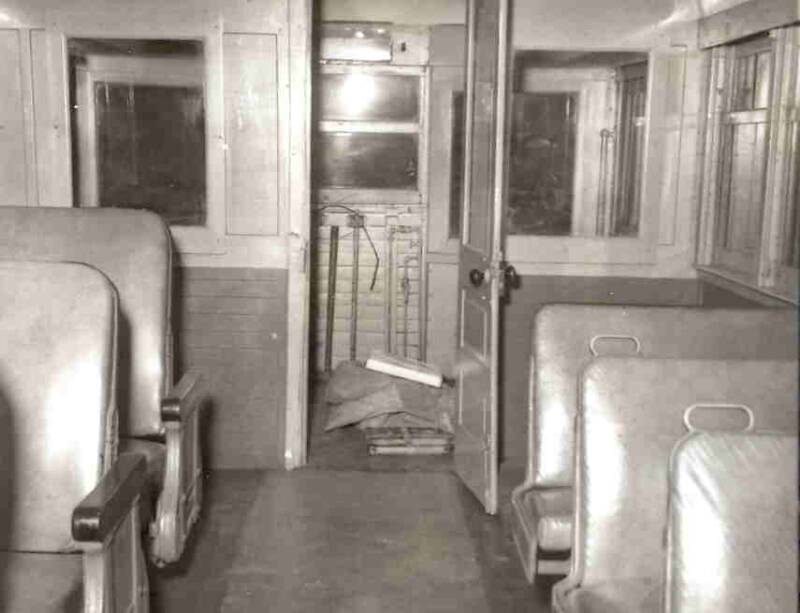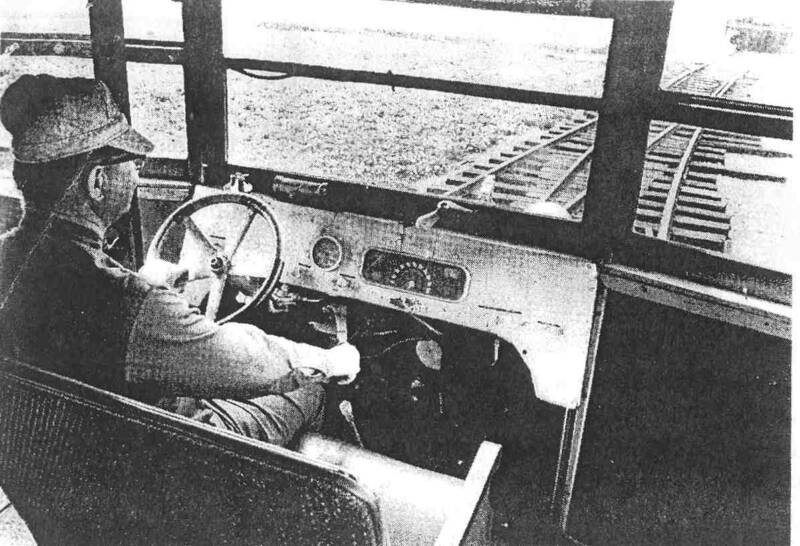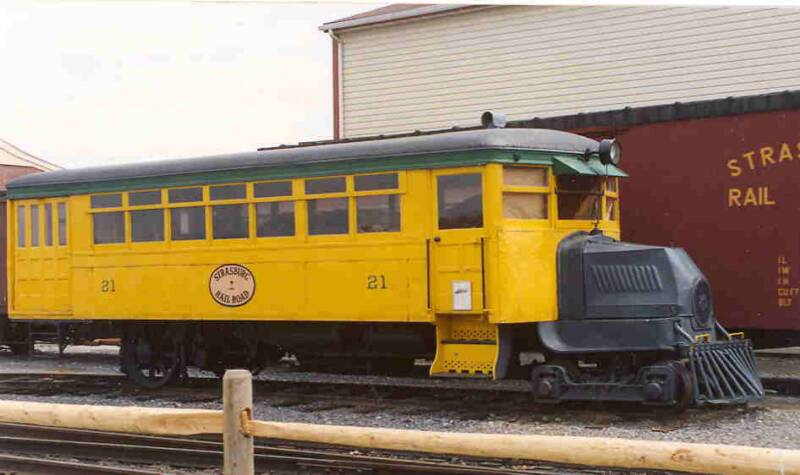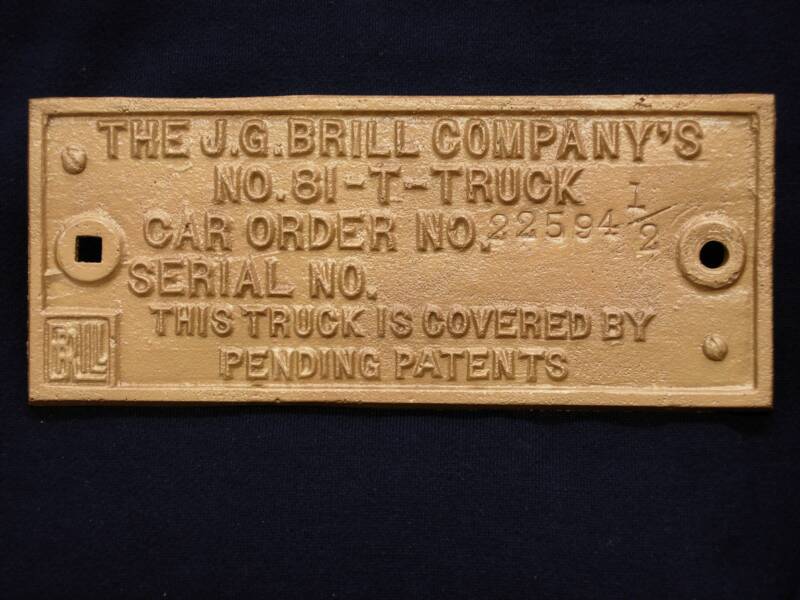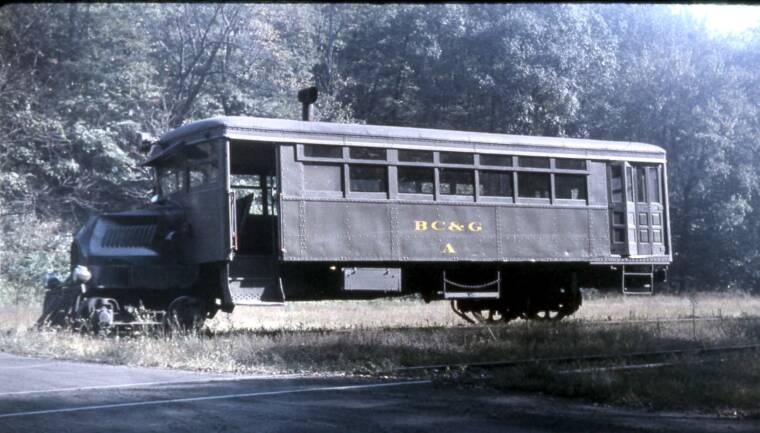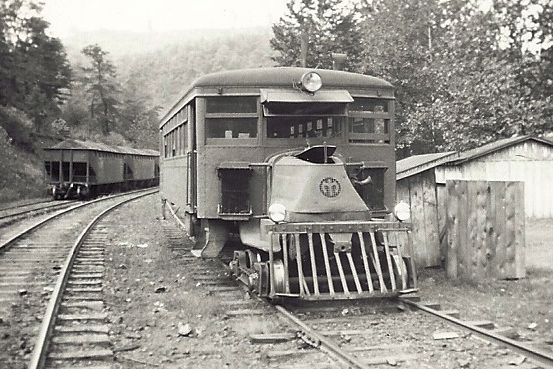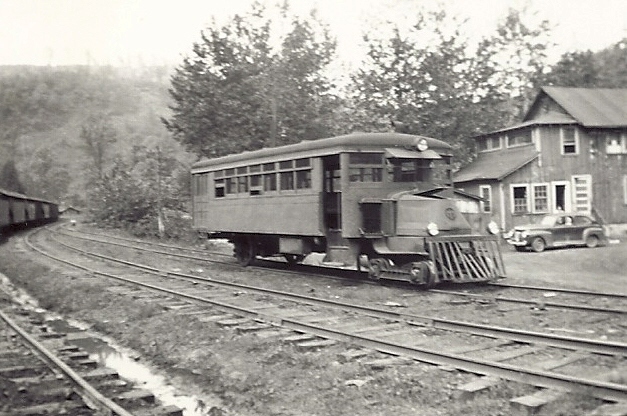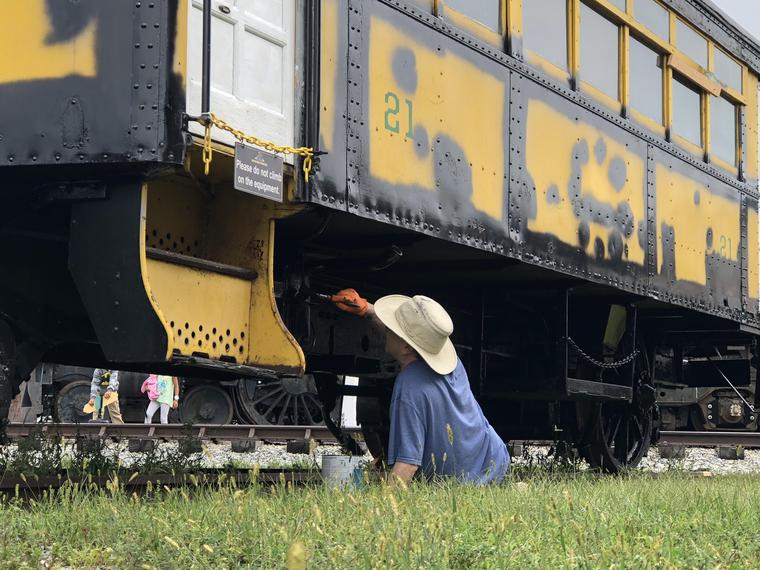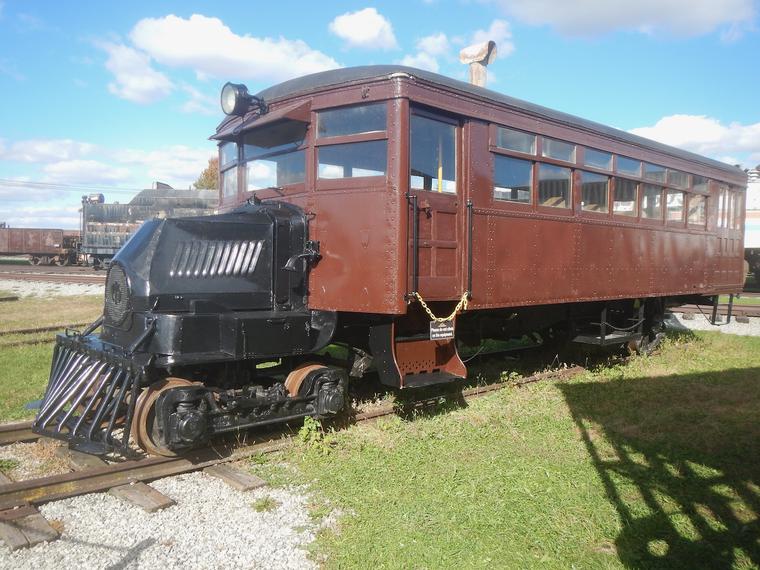BC&G Railbus "A"
In 1941, the BC&G acquired a 1921-built Mack Model AC railbus. The chassis was built by Mack, the truck people, and the body was built by Brill. As seen in the builders photo below, from the Strasburg Rail Road collection, the bus was originally constructed (c/n 6005) as #20 for the Lewisburg, Milton & Watsonville Passenger Railway, a Pennsylvania trolley line that bought the car new. In 1928 it became PRR #4738 and in 1931 it was sold to the Artemus-Jellico, a Kentucky shortine, before going to the BC&G.
This complete accounting of Motor "A" can be found in The History of Mack Rail Motor Cars and Locomotives.
I had previously been under the impression that the railbus was originally fitted with a diesel engine. However, the typed notatation on this builders photo and the History of Mack book make it clear that all Mack Railbusses had gasoline engines. The Mack book indicates AC models had a 64 hp 4 cylinder engine. The reconfiguration of the distinctive Mack hood into a somewhat less distintive form was done by the BC&G crews when the original Mack engine was replaced with a "more modern" Chevrolet.
Railbus Trivia
LAST ARMED TRAIN ROBBERY IN US
On October 3, 1952 at the height of the labor unrest, Motor "A" was held up at gunpoint by eleven armed men - presumably strike sympathizers. They forcibly removed and robbed the passengers, beating up those that resisted. This unfortunate event is often reported as the last armed train robbery on a common carrier in the US.
David Marquis photo circa 1958
The photographs of Motor "A" show it at different times in two different greens, just like the three passenger coaches. Sometimes it appears olive drab, as in the photo on the right. In other photos it appears more forest green, like in the picture above.
In this builders Interior photo the pot bellied stove can be seen in the left front corner. The driver sat in center. The circular device that looks like a steering wheel was actually a brake wheel. (See drawing and additional photo below)
"B" BEFORE "A"
According to Warden this car became known as Motor "B" because of it's FWD Model "B" designation. Later, in 1941 when the larger Mack AC bus was obtained, it became Motor "A", hence the "B" came before the "A".
Howard Ameling photo - June 1, 1963
Howard Ameling - June 1, 1963
This wonderfully detailed drawing of Motor "A" comes from the December 2002 MILEPOST, a publication of the Friends of the Railroad Museum of Pennsylvania. It can be seen in detail by clicking on it to enlarge. The overall length of the bus was about 32 feet and the distance from the center of the front truck to the rear axle was 22 feet. It had a seating capacity of 35 with a 6 foot long baggage room at the back. Note that this drawing, and the builders photo above show the bus fitted with marker lights front and rear. This drawing does not, however, show the stove.
These two photos show the interior of the bus as it appeared during it's years on the BC&G. On the left is a view looking toward the drivers seat, a very similar view to the builder's photo above. Note that hanging above the drivers seat is what looks all the world like a loop for handing up orders! The right hand photo is the view looking reward toward the baggage compartment with what look like mail sack on the floor!
Richard Manning collection - two photos
OK, model builders, here you go! I've had the Milepost article in my file for many years but it wasn't until preparing this page for the website that I noticed this wonderful photo looking over the driver's shoulder. What a great looking instrument panel, eh?
What's particularly interesting is that the driver has his left hand on the hand brake wheel the way you would hold a steering wheel. It probably was impossible not to! His right hand is on the air brake stand. The transmission shift lever is below his right hand. According the Milepost article, the transmission had 4 speeds forward and 4 speeds in reverse. Maximum speed was 30 mph and fuel economy was 14 mpg according to the 1922 Car Builder's Cyclopedia.
ONE OF THE LAST RAILBUSSES IN SERVICE
Motor "A" was one of the last (some sources claim it was THE last) railbus in regularly scheduled service in the US. It operated, generally on a tworound-trip per day basis, until early in 1959. According to the History of Mack book, as of January 1, 1959 twenty-six Mack passenger rail motor cars remained, in various capacities, on the rosters of thirteen railway systems.
This photo shows two interesting details. First, notice the radiator mounted to the righthand side of the body next to the hood. This radiator is not evident on later photos. It's not clear what its purpose was, whether it was a supplimental engine radiator, or a transmission or oil cooler.
Second, notice that a small hatch is open on the top of the hood.
Perhaps someone can identify for sure where this photo was taken.
John Armstrong photo - September 15, 1951
This photo is from page 16 of the History Of Mack book. As stated in the caption, it was taken in May of 1955 in Swandale. The company store and feed shed are visible behind the bus. It would seem that the bus was in revenue service when this photo was taken given the attire of the crewmen just visible to the right.
Motor "A" was at the Strasburg Museum in Strausburg Pennsylvania, painted in a rather gaudy yellow and green scheme, but otherwise pretty much in the configuration of when it was on the BC&G when this photo was taken in 1990. The bus is now at the Pennsylvania Railroad Muesum.
Richard Manning, General Superintendent, apparently gave John Killoran permission to remove the Brill builder's plate from Motor "A" when the railroad closed. Frank Criswell was fortunate enough to be able to recently purchase the plate pictured here. This is the original color of the plate as Frank cleaned off the many layers of paint that had accumulated. Ir measures 7 3/4" by 3 3/4" and is about 3/16" thick at the edges.
Disposition
RAILBUS "A" ENGINEERS or DRIVERS
Patsy Baughman, her husband Herald, and Roscoe Friend put their heads together and have confirmed that there were three drivers of Motor "A" during the 1950s. The three were "Cowboy" Francis, Ray Connor and later Kenneth Brady. All three of these gentlemen lived in Dundon.
John Phillips took this profile photo of Motor A in October 1958. The lighting shows every rivet. .
INSTALLATION of the CHEVROLET ENGINE - Cody Burdette has indicated that the replacement of the original Mack gasoline engine with a more modern Chevrolet engine was done by Ralph Acree, a long-time welder and mechanic at Dundon. Cody doesn't know the exact date of the retrofitting but it was after July of 1948 (see photos below) and before 1950 because it was already done when Cody came to the railroad in that year. As a side note, Ralph Acree tried to run an auto repair shop out of the old Dundon engine house after the railroad closed but gave up on it after a short while.
These two photos are from the collection of James Greene and were taken in July or August of 1948. They are the only known photos of Motor "A" on the BC&G with the original hood. These images were taken at Widen and the bank appears in the image on the right.
HOW "COWBOY" FRANCIS GOT HIS NAME
Bill Francis, "Cowboy"'s son, shares that his dad was born and raised in Wyoming and that it was only after he married a girl from WV that he moved there. The couple had inherited a farm from the woman's family. Besides being from 'out west' he carried a side arm when tranporting the mail in Motor "A" and so the nickname "Cowboy" came naturally. He drove Motor "A" during the 1946-1952 period.
Wayne Laepple, a volunteer at the Railroad Museum of Pennsylvania, reports that they are in the process of cosmetically restoring ex-BC&G Motor "A". It will be painted in Tuscan red and black, the livery of it's original owner Lewisburg, Milton and Watsontown.Passenger Rwy.. An evaluation is being made about getting the bus running again. (9/25/19)
MOTOR "A" RESTORATION
11/3/21
Per Wayne Laepple: "Here, finally, is a photo of the Mack railbus today. Over the past several weeks, my Saturday volunteer crew gave it a protective paint job. It's not tuscan red, but it will help conserve it for now. The Friends group is considering sending it off-site to be restored in the next year or two, if they can find a shop able to do it. (11/3/21)
